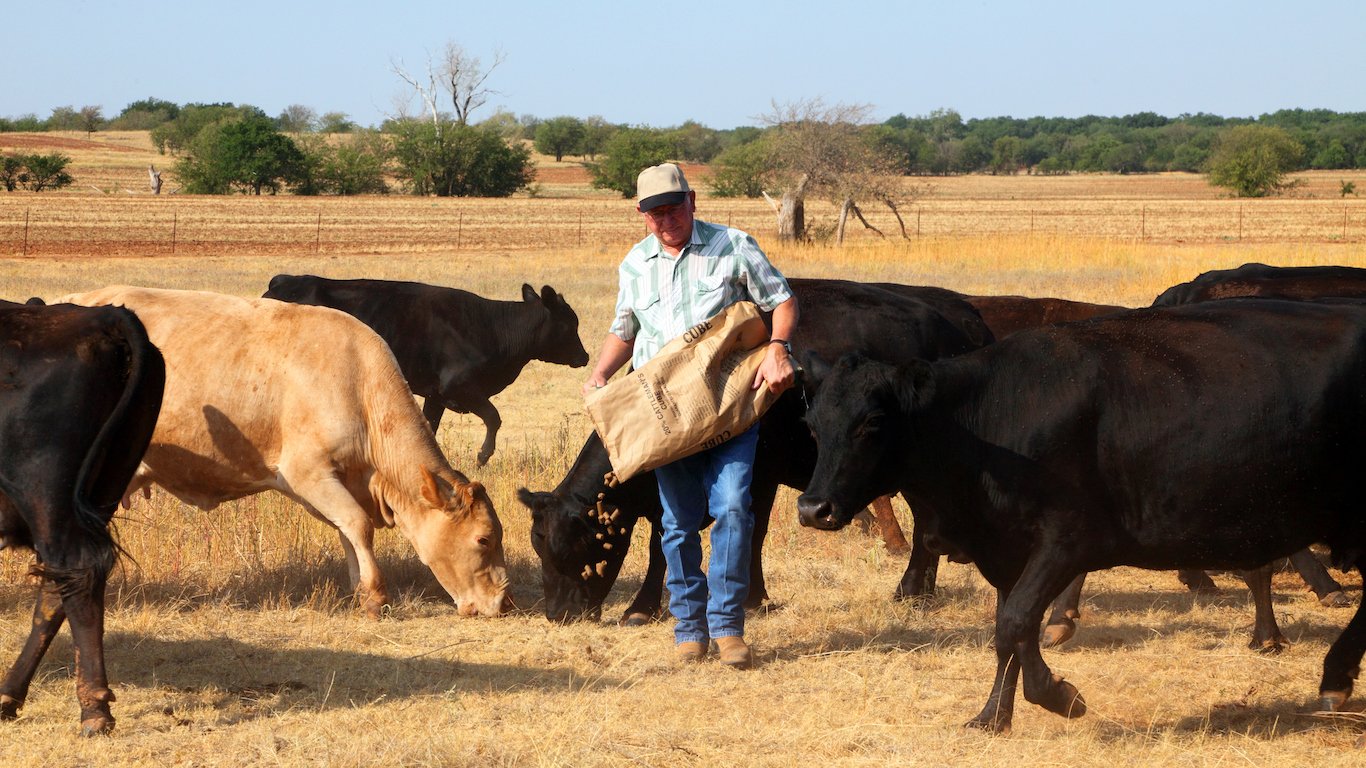

The introduction of meatless plant-based protein foods from companies like Beyond Meat and Impossible Burger hasn’t arrived a moment too soon to effect (perhaps) a change in people’s eating habits. Eating less meat, for example, would reduce both methane emissions from live cattle and the amount of land deforested every year to provide pastureland for those cattle.
That is just one of the comments related to global land and water use included in a summary report from the U.N. Intergovernmental Panel on Climate Change (IPCC), issued Thursday.
Using data going back to 1961, the report notes that agriculture currently accounts for about 70% of the world’s freshwater use. Irrigated cropland used about 1% of the world’s ice-free land area (130 million square kilometers, or more than 50 million square miles), while another 12% of total ice-free land is used for non-irrigated crops. More than a third (37%) of the world’s land is used as pasture for livestock, while 22% used for plantation and timber forests. More than a quarter of the global land area (28%) attracts minimal human use.
About a quarter of the ice-free land area is subject to human-caused degradation. Soil erosion from agricultural fields is from 10 to 100 times higher than the soil formation rate.
The IPCC also notes that climate change, including increases in frequency and intensity of extremes, has adversely affected food security and terrestrial ecosystems, as well as contributed to desertification and land degradation in many regions. Some 500 million people now live in areas that have experienced desertification between the 1980s and 2000s, with the largest numbers in South and East Asia, the area around the Sahara Desert and the Middle East.
Climate change isn’t just making many of these places more unpleasant — they are becoming unlivable. In 2017, 18.8 million people were displaced by natural disasters, according to the Internal Displacement Monitoring Centre. As the weather grows more volatile, that number could continue to rise in the coming years. Here are the places where the climate refugee crises are happening right now, and how you can help.
In the period between 2007 and 2016, agriculture, forestry and other land-use activities accounted for 13% of all human-caused carbon dioxide emissions, 44% of all methane emissions and 82% of nitrous oxide (N₂O) emissions, or about 23% of the 9 billion to 15 billion metric tons of net greenhouse gas (GHG) emissions over the period. The good news is that land also acts as a sink for GHGs, and during the 10-year period yielded a net sink of 11.2 billion metric tons of carbon dioxide.
Anticipated net increases in carbon dioxide emissions from vegetation and soils due to climate change are projected to more than offset those expected increases. Thawing permafrost is also expected to release stored carbon dioxide. Deforestation in the Amazon forest could dump 50 billion metric tons of carbon dioxide into the atmosphere in the next 30 to 50 years as the deforested lands turn into deserts.
With about 1.5°C of global warming, the risks from dryland water scarcity, wildfire damage, permafrost degradation and food supply instabilities are projected to be high. At around 2°C of global warming, the risk from permafrost degradation and food supply instabilities are projected to be very high. As the globe experiences more extreme weather events, the IPCC expects the stability of the world’s food supply to decrease, bringing with it another predictable outcome: “The most vulnerable people will be more severely affected.”
Adapting to and mitigating the effects of climate change include fighting desertification and land degradation and boosting food security. The report also suggests a number of land management options and a wide range of adaptation and mitigation responses that contribute to sustainable future development.
What is needed to fight back against the effects of climate change are policies at all levels of government, including policies that reduce food loss and waste and influence dietary choices, enable more sustainable land-use management, enhance food security and support low emissions levels.
Hans-Otto Pörtner, who chaired the IPCC working group on impacts, adaptation and vulnerability, commented to Nature magazine: “We don’t want to tell people what to eat. But it would indeed be beneficial, for both climate and human health, if people in many rich countries consumed less meat, and if politics would create appropriate incentives to that effect.”
Neither the IPCC nor the United Nations has the power to impose any of these adaptation and mitigation steps on any government. As Pörtner says, however, “[W]e hope that our report will sufficiently influence public opinion [to stop deforesting the tropics].” The same influence is also needed to change farming and eating habits and to slow down or reverse the harsher effects that weather is having on many parts of the United States. These are the places where weather is getting worse because of climate change.
Sponsored: Find a Qualified Financial Advisor
Finding a qualified financial advisor doesn’t have to be hard. SmartAsset’s free tool matches you with up to 3 fiduciary financial advisors in your area in 5 minutes. Each advisor has been vetted by SmartAsset and is held to a fiduciary standard to act in your best interests. If you’re ready to be matched with local advisors that can help you achieve your financial goals, get started now.
Thank you for reading! Have some feedback for us?
Contact the 24/7 Wall St. editorial team.



